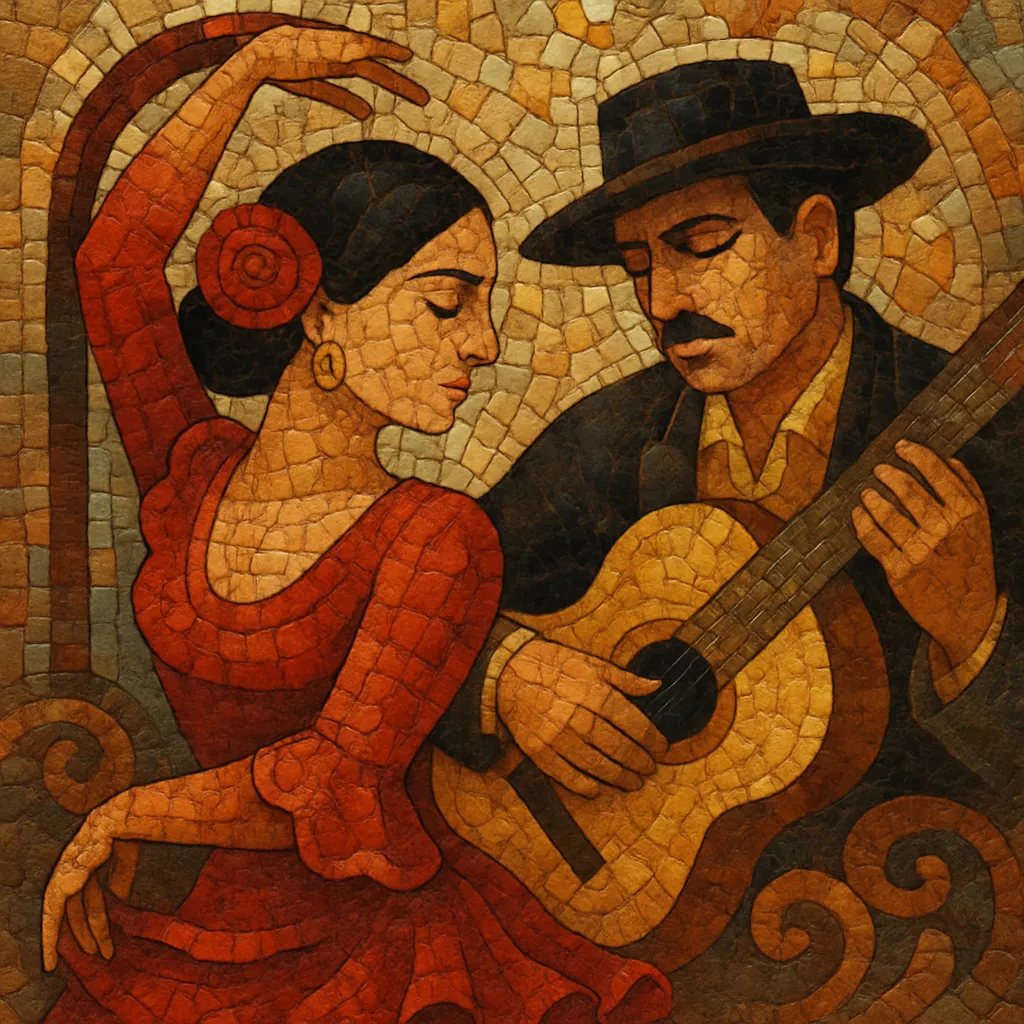Bolero español is the original Spanish bolero: a graceful, stylized song-dance of the late 18th and 19th centuries in a moderate triple meter (typically 3/4), performed with guitar and castanets and codified in the escuela bolera tradition.
It is distinct from the later Cuban bolero. Spanish bolero blends popular dance roots (fandango, seguidilla) with theatrical and classical technique, favoring elegant melodies, light ornamentation, and poised, danceable rhythms often colored by hemiolas.
Throughout the 19th century it became a staple of Spanish salons and theaters (zarzuela, tonadilla), and it was later stylized by concert composers and choreographers across Europe.
Spanish bolero emerged in Spain in the late 1700s, often credited to dancer-choreographer Sebastián Cerezo. It crystallized from popular Andalusian song-dances such as the fandango and seguidilla, while adopting the elegance and posture of ballet technique. The form’s signature is a moderate triple meter, the use of castanets, stylized arm and torso work, and a poised, lyrical melodic line.
During the 1800s, bolero was formalized within the escuela bolera (Spanish classical dance school). Dancers and teachers codified steps, turns, and castanet patterns, while musicians standardized accompanying guitar figures and simple, singable melodies. The genre thrived in salons and urban theaters, where it intertwined with the tonadilla and contributed dance numbers to zarzuela productions.
By the mid-to-late 19th century, Spanish and European composers wrote boleros for voice, piano, and guitar, and choreographers set the dance for the stage. Guitarist-composers such as Fernando Sor and Dionisio Aguado published boleros; later, figures like Tárrega, Albéniz, and Granados created concert boleros. The idiom’s rhythmic profile and atmosphere traveled beyond Spain, inspiring stylizations in Romantic and early 20th-century concert music and ballet.
As new popular styles rose, the Spanish bolero receded from mainstream dance floors, but it remained alive in the escuela bolera tradition, in zarzuela repertory, and in concert pieces. Periodic revivals by dance companies and early-music ensembles, along with conservatory training in Spanish classical dance, continue to preserve the genre’s technique and repertoire. Importantly, it remains distinct from the Cuban bolero, despite the shared name.
Write in a moderate triple meter (3/4; sometimes 3/8) at a graceful, danceable tempo. Subtle hemiolas (2+1 against 3) can add lift between phrases.
Use an arpeggiated or lightly strummed guitar accompaniment that outlines tonic and dominant, with periodic bass–treble alternation. Castanets provide crisp rhythmic punctuation; if unavailable, emulate their patterns with light percussion (e.g., woodblocks) or staccato pizzicati.
Favor clear classical-period harmony (I–V–I, II6–V–I, occasional secondary dominants). In minor, you can invoke Spanish color through the Phrygian turn (bII–V–i) or an Andalusian-flavored descent (iv–III–II–I or i–VII–VI–V) used sparingly to maintain elegance over overt flamenco rawness.
Craft a cantabile, balanced melody with short two- or four-bar phrases and graceful appoggiaturas, turns, and passing notes. Aim for poised vocal or violin-like lines; avoid excessive melisma. Periodic sequences and call–response between melody and accompaniment fit well.
Common layouts include a short introduction, a main refrain (estribillo), and contrasting couplets (coplas) with a return to the refrain. For concert pieces, rounded binary (A–B–A') or theme-and-variations works nicely, keeping phrases symmetrical for danceability.
Mark accents suitable for footwork and arm phrasing. Dynamics should breathe with the steps: elegant crescendos into cadences, subito pianos for turns, and tasteful rubato at phrase ends without losing the underlying 3/4 pulse.


